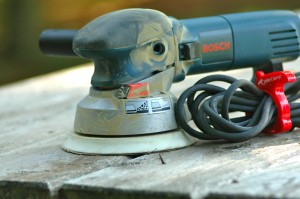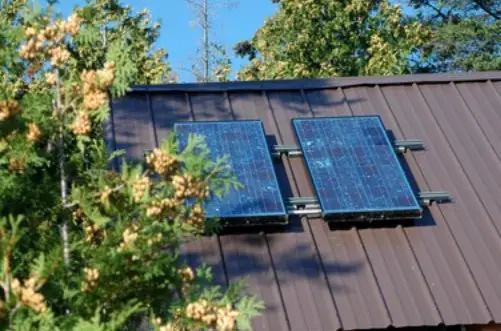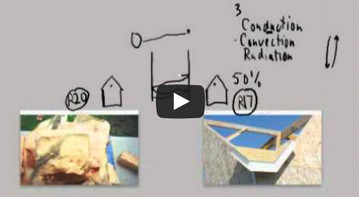Aging outdoor wood can be dangerous stuff. Although it survives the elements just fine without any kind of finish, the ever-present temptation to brighten up greying exterior wood with paint or stain usually leads to a cycle of serious regret. Everyone’s happy at first – after that new finish masks the barnboard-grey colour – but a year or two of peeling leaves aged wood looking much worse than before, requiring a lot of scraping and refinishing to bring back a sense of decency. But there is at least one sane approach for sprucing up the appearance of aging, bare outdoor wood that’s fast and effective. It involves a process of sanding and oiling that I put into practice most recently as part of a volunteer crew fixing up an old playground. It works just as well on new wood, too. Oiling doesn’t add colour, but it does create a fresher, richer look, with no possibility of peeling or ongoing maintenance dependency.
 Speed and ease of application are the main benefits of oiling outdoor wood, and the process begins with sanding. This is especially important with grey, weathered wood because the loose surface fibers need to be removed before oiling for best results. The Bosch 1250DEVS is the fastest and most powerful hand-held random orbit sander I know of, so it’s perfect for dealing with larger, outdoor surfaces. It spins a 6-inch diameter sanding disk that works much faster than the more common 5-inch sanders. Like all random orbit sanders, the 1250DEVS spins a circular sanding pad while also moving the pad back-and-forth in an orbital pattern at the same time. The combination of rotating and orbiting movements increases sanding speed while reducing surface scratching of the wood. The uncommon thing about the 1250DEVS is its two orbital settings. Dial in the coarser setting for maximum sanding speed, or the finer setting that makes the sander easier to hold and control in close quarters. You’ll find 80-grit sanding disks work best for preparing outdoor wood. There’s no need for anything finer.
Speed and ease of application are the main benefits of oiling outdoor wood, and the process begins with sanding. This is especially important with grey, weathered wood because the loose surface fibers need to be removed before oiling for best results. The Bosch 1250DEVS is the fastest and most powerful hand-held random orbit sander I know of, so it’s perfect for dealing with larger, outdoor surfaces. It spins a 6-inch diameter sanding disk that works much faster than the more common 5-inch sanders. Like all random orbit sanders, the 1250DEVS spins a circular sanding pad while also moving the pad back-and-forth in an orbital pattern at the same time. The combination of rotating and orbiting movements increases sanding speed while reducing surface scratching of the wood. The uncommon thing about the 1250DEVS is its two orbital settings. Dial in the coarser setting for maximum sanding speed, or the finer setting that makes the sander easier to hold and control in close quarters. You’ll find 80-grit sanding disks work best for preparing outdoor wood. There’s no need for anything finer.
 With wood sanded, it’s time for a finish, and this is where mistakes are often made. Many finishes form a surface film, and this usually leads to peeling and a big prep job removing the ugly finish later on. Although oil isn’t used very often for outdoor wood, it is the best choice for a casual-but-cared-for look. It enhances the appearance of old wood and new, and it never peels. Maintenance is just a matter of applying more oil, if you want to. Don’t feel like keeping up with the oiling regime? No problem. Leave the wood alone and it simply resumes weathering as the oil wears out. No peeling, no worse-than-before mess. Oiling is especially good for outdoor wood furniture, since all the nooks, crannies and spaces between slats, legs and arms are almost impossible to strip properly when paint or varnish peels.
With wood sanded, it’s time for a finish, and this is where mistakes are often made. Many finishes form a surface film, and this usually leads to peeling and a big prep job removing the ugly finish later on. Although oil isn’t used very often for outdoor wood, it is the best choice for a casual-but-cared-for look. It enhances the appearance of old wood and new, and it never peels. Maintenance is just a matter of applying more oil, if you want to. Don’t feel like keeping up with the oiling regime? No problem. Leave the wood alone and it simply resumes weathering as the oil wears out. No peeling, no worse-than-before mess. Oiling is especially good for outdoor wood furniture, since all the nooks, crannies and spaces between slats, legs and arms are almost impossible to strip properly when paint or varnish peels.
Our playground work crew used Minwax Teak Oil on the 20-year-old wooden play structure and it proved easy to apply, even for kids. You can put it on with a brush or spray gun, with no worries of drips or runs. Any excess oil soaks in, so it’s very forgiving. I know from previous experience that it also keeps looking good outdoors for a year or so. Renewal is simply a matter of putting on more oil, with no need for sanding first.
Something special happens when people volunteer to accomplish things together. You get a synergy of fellowship, enthusiasm, accomplishment and practical community benefits. The key to keeping that volunteer spirit going is a simple work strategy that yields lasting results. And when it comes to reviving old wood, I’ve yet to see anything better than simple, reliable and under-appreciated sanding and oiling.












